
How to Use DHT22: Examples, Pinouts, and Specs
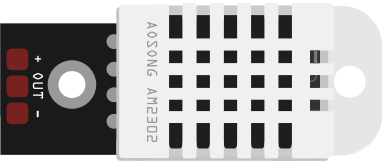
 Design with DHT22 in Cirkit Designer
Design with DHT22 in Cirkit DesignerIntroduction
The DHT22 is a reliable sensor for measuring temperature and humidity in various applications. It is a low-cost digital sensor that provides high accuracy readings. The sensor is widely used in environmental monitoring, HVAC systems, weather stations, and home automation projects. Its digital output makes it easy to interface with a range of microcontrollers, including the popular Arduino platform.
Explore Projects Built with DHT22
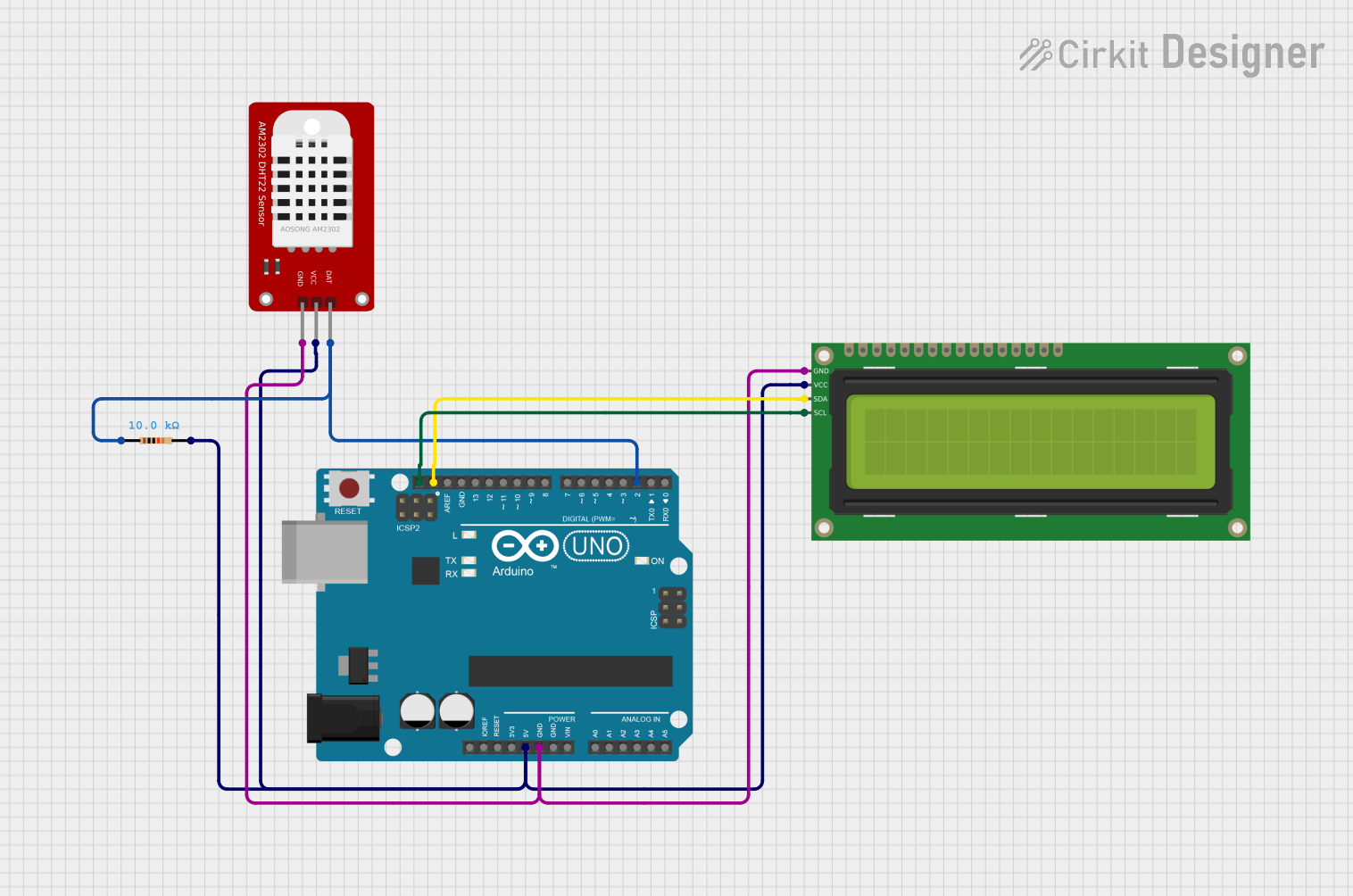
 Open Project in Cirkit Designer
Open Project in Cirkit Designer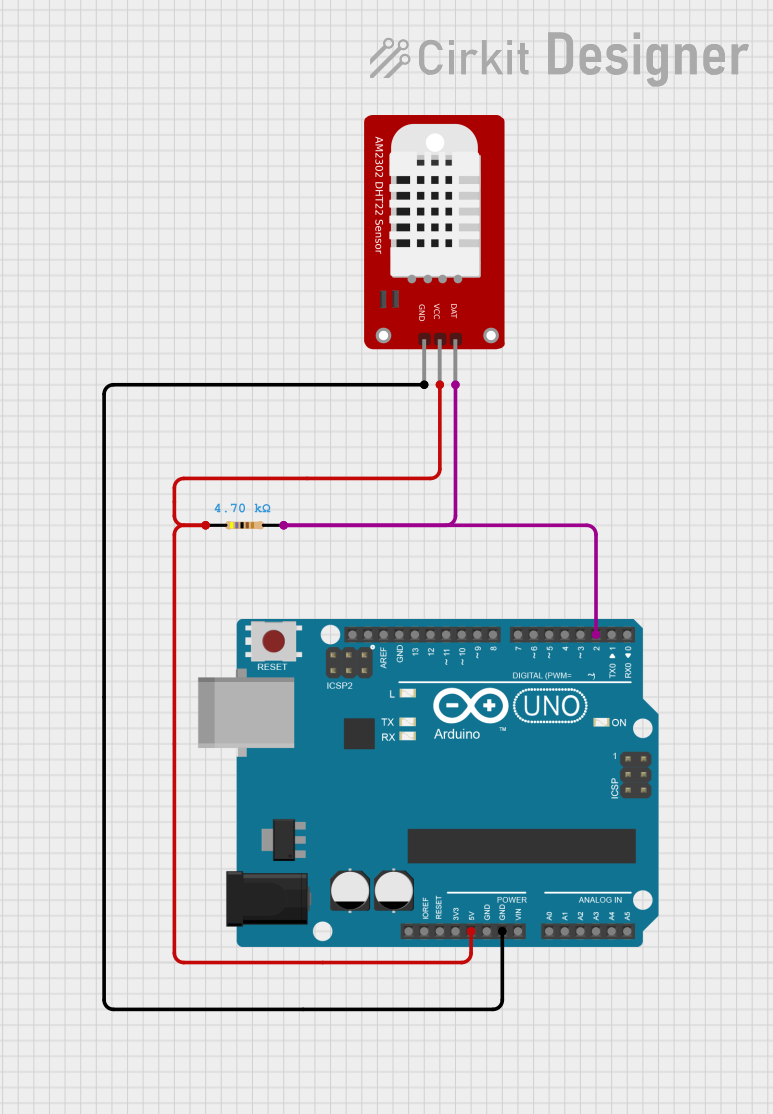
 Open Project in Cirkit Designer
Open Project in Cirkit Designer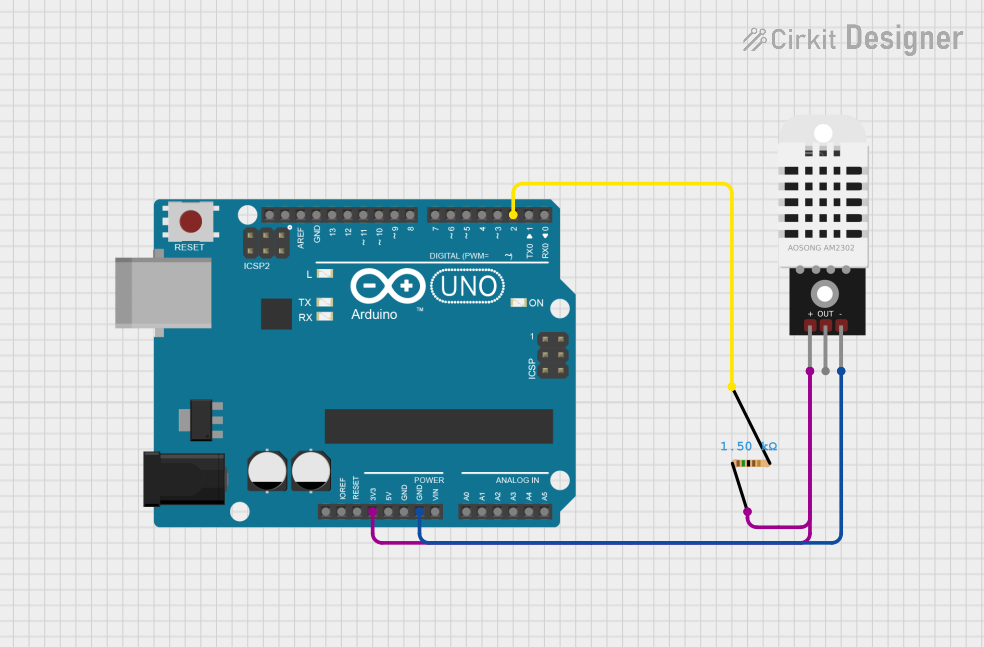
 Open Project in Cirkit Designer
Open Project in Cirkit Designer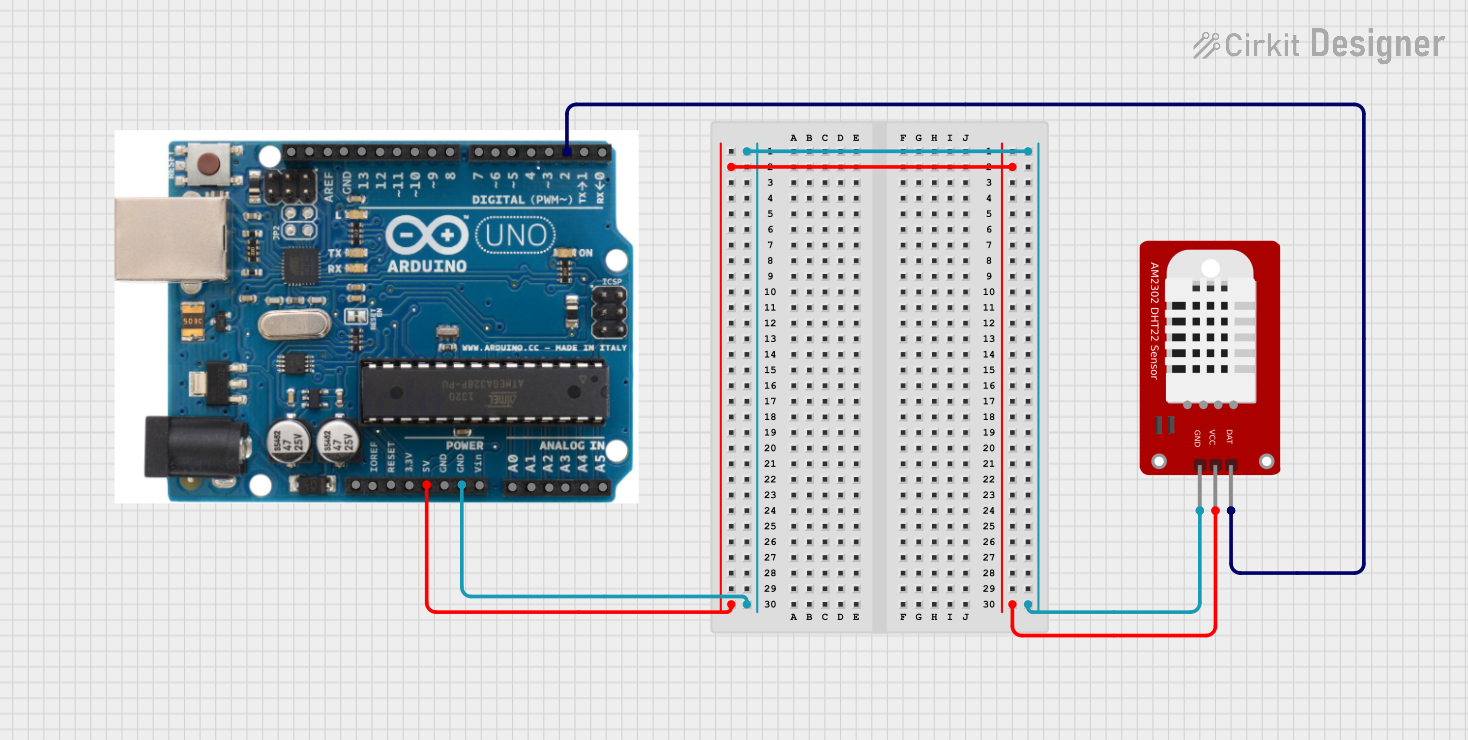
 Open Project in Cirkit Designer
Open Project in Cirkit DesignerExplore Projects Built with DHT22

 Open Project in Cirkit Designer
Open Project in Cirkit Designer
 Open Project in Cirkit Designer
Open Project in Cirkit Designer
 Open Project in Cirkit Designer
Open Project in Cirkit Designer
 Open Project in Cirkit Designer
Open Project in Cirkit DesignerTechnical Specifications
Key Technical Details
- Humidity Measurement Range: 0-100% RH
- Humidity Measurement Accuracy: ±2% RH
- Temperature Measurement Range: -40 to 80°C
- Temperature Measurement Accuracy: ±0.5°C
- Operating Voltage: 3.3 to 6V DC
- Output Signal: Digital (single-bus)
- Sampling Rate: ≤ 2 seconds
Pin Configuration and Descriptions
| Pin Number | Name | Description |
|---|---|---|
| 1 | VDD | Power supply (3.3 to 6V DC) |
| 2 | DATA | Digital output pin |
| 3 | NC | Not connected |
| 4 | GND | Ground |
Usage Instructions
Interfacing with a Circuit
- Connect the VDD pin to a 3.3V or 5V power supply.
- Connect the DATA pin to a digital input pin on your microcontroller.
- Connect a pull-up resistor (typically 10kΩ) between the DATA pin and VDD.
- Connect the GND pin to the ground of your power supply and microcontroller.
Important Considerations and Best Practices
- Ensure that the power supply voltage does not exceed the maximum rating of 6V.
- The pull-up resistor on the DATA line is necessary for proper communication.
- Avoid long wires between the sensor and the microcontroller to minimize signal degradation.
- The sensor should not be used in environments with condensing humidity or in the presence of corrosive gases.
Example Code for Arduino UNO
#include "DHT.h"
#define DHTPIN 2 // Digital pin connected to the DHT sensor
#define DHTTYPE DHT22 // DHT 22 (AM2302)
DHT dht(DHTPIN, DHTTYPE);
void setup() {
Serial.begin(9600);
dht.begin();
}
void loop() {
// Wait a few seconds between measurements.
delay(2000);
// Reading temperature or humidity takes about 250 milliseconds!
float humidity = dht.readHumidity();
// Read temperature as Celsius (the default)
float temperature = dht.readTemperature();
// Check if any reads failed and exit early (to try again).
if (isnan(humidity) || isnan(temperature)) {
Serial.println(F("Failed to read from DHT sensor!"));
return;
}
// Compute heat index in Celsius (isFahrenheit = false)
float heatIndex = dht.computeHeatIndex(temperature, humidity, false);
Serial.print(F("Humidity: "));
Serial.print(humidity);
Serial.print(F("% Temperature: "));
Serial.print(temperature);
Serial.print(F("°C Heat index: "));
Serial.print(heatIndex);
Serial.println(F("°C"));
}
Troubleshooting and FAQs
Common Issues
- Inaccurate Readings: Ensure the sensor is not exposed to direct sunlight or drafts. Check the pull-up resistor and wiring.
- No Data: Verify the power supply and connections. Ensure the correct pin is defined in the code.
- Erratic Data: Use shorter wires or shielded cables. Ensure there is no interference from other electronic devices.
Solutions and Tips
- If the sensor fails to initialize, check the power supply and ensure the DATA pin is connected correctly.
- For consistent readings, allow the sensor to acclimate to the environment for at least an hour before taking measurements.
- Use a decoupling capacitor (e.g., 100nF) between VDD and GND close to the sensor to stabilize the power supply if necessary.
FAQs
Q: Can the DHT22 sensor be used outdoors? A: Yes, but it should be protected from direct sunlight, rain, and condensation.
Q: How long should I wait between readings? A: The DHT22 requires a minimum of 2 seconds between readings for accurate results.
Q: Is it necessary to use a pull-up resistor on the DATA pin? A: Yes, a pull-up resistor (typically 10kΩ) is required for the DHT22 to function correctly.
Q: Can I use the DHT22 sensor with a 3.3V microcontroller? A: Yes, the DHT22 can operate with a supply voltage as low as 3.3V.